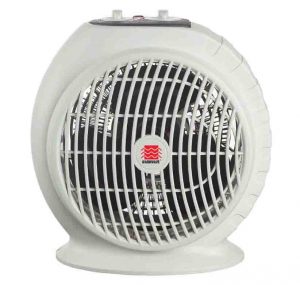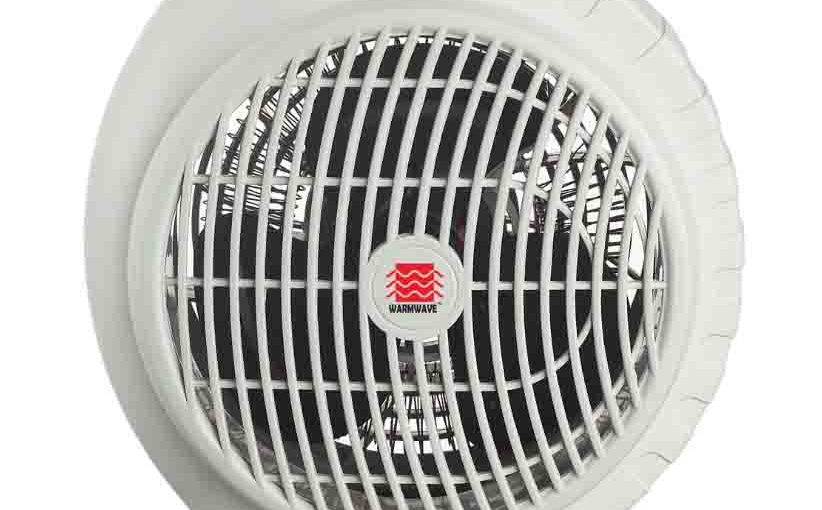We’ve dealt with these heaters for three decades in many dwellings. We had them in our bedrooms, third floor finished attic rooms, and drafty condos. So fixing noisy portable fan heaters became a topic of high interest for us. We wanted to learn how to fix them for better sleep, better mood, and higher grades in school.
Portable fan heaters work well for briefly adding to the primary furnace. But unless you’ve spent extra money for the best fan space heater, don’t count on it being quiet.
Indeed, the lower quality forced air heaters tend to be noisy due to the whirring fan blades inside. They also suffer from expanding and contracting heating elements, mounts, and fittings. They squeak, creak, ping, pang, pop, squeal, hum, whine, bang, zing, buzz, whistle, and ring even.
When turned on, these noises occur as the warming parts change size and rub against each other. Then, when they go off, portable heaters make similar noises. How? Their metal parts contract during cool-off. This often makes ticks and taps, and squeaks and squawks.
Fixing Noisy Portable Fan Heaters
So, here are some of the tricks we’ve tried with success on Patton and Dayton electric fan heater units. These reduced the din a good bit.
Now we intend these methods only for fan-based electric heaters. Why? Because this type tend to have lower surface temperatures than the hotter, radiant units.
Do not use lubes on any glowing-type heating elements. These often appear in radiant heat sources such as quartz or halogen blower type heaters.
Tighten All Screws
Screws and rivets hold in place the fan motor, wiring, and other parts inside. Drive the screws into the thickest, most solid parts of the heater case. This makes a more solid backing for moving and heating components. This deadens vibration and lowers hum transmission.
Clean All Portable Fan Heater Vents
Make sure the intake and heat output vents are clean. Free them of obstructions that can cause loud whirring or whistling as the air moves through them.
Lube All Brackets and Joints
Apply silicone oil to any places where metals meet and could rub and bind. Since many joints heat up in these heaters, use a thick oil or grease on them. This lube should withstand high temps without drying, burning, or breaking down. We’ve used the WD-40 Specialist Water Resistant Silicone Lubricant with success. We’ve also tried various white lithium greases with good results. Sadly though, we found no lube that works forever. All the ones we tested required periodic re-application. Typically, we’ve “re lubed” our portable fan heaters every two years.
Fixing Noisy Portable Fan Heaters: Reinforce All Brackets and Joints
Hoping to reduce the need for the lubes mentioned above, we’ve reinforced the stand-off brackets in small portable fan heaters. These holders suspend the heating element. This looks like a thin, finned bar. During warm-up and cool-down, where these brackets attach to the heater cabinet made much tapping, squealing, ringing, and clicking.
So we drilled a single hole in each bracket where it meets the cabinet. Then , we drove a sheet metal screw through that hole. This quelled heating element sounds well. While they still click and pop some, they do so far less than before. The squeaks and squeals completely went away too. Now most portable fan heater cases are plastic. So you might use a nut and bolt combo to tightly fasten the brackets inside, for best hold. Be careful on plastic models not to break the case by hard driving screws into it.
Secure the Heating Element
Portable fan heaters can also hum and buzz while running; especially the higher power residential 1500 watt units. They’re loudest when heating at highest speed and max power.
This hum problem isn’t as easy to fix as the squeaks, pings, and pops. But you can reduce hum and buzz rather well. How? Check that the element is tight in the brackets. A tight element can reduce the ringing that come when a loose heating element vibrates within the bracket. The bracket should clamp the element snugly. But it should still allow it to expand and shrink.
You can often bend the bracket to fit it to the element more tightly. But do not bend it too many times. If you do, it may break.

Fixing Noisy Portable Fan Heaters: Choose a Thermostat Wisely
The right thermostat for your portable fan heaters can lower the noise. If you’ve decided to have an external thermostat especially, you can buy a decent model for your heater.
This is critical now that electronic thermostats are mainstream. These sensors use the same device (a triac) for switching as do light dimmers. Anyone who’s ever played with light dimmers knows that dimmer buzz well. The light, as well as the dimmer, can buzz loudly.
Likewise, a poorly designed thermostat may not always turn the triac fully on during each AC power sine wave cycle. This can thus, cause loud buzzing in your heater, just like the dimmer makes in the light. A buzzy stat also makes radio and TV hash (RFI). Thus, replacing your thermostat may solve some buzzing problems from the fan motor and heating element.
Temporarily bypassing the thermostat by adding jumpers across its switched terminals shows if your it is indeed adding the buzz. If that buzz goes away when jumped, then the thermostat is the cause.
If you replace the thermostat though, use caution when choosing an electro-mechanically switched model. These have micro switches often click when turning on and off. Thermostats like these can therefore add their own noises to the portable fan heater din.
Replace the Portable Fan Heater
Sadly, the cheaper electric portable fan heaters are louder. So, these may not work well for bedrooms or other rooms needing quiet. For these spaces, try we portable, no-fan hydronic heaters.
Hydronic electric heaters are quite quiet. Why? Because the hydronic liquids in them surround the heating element. This reduces vibration, buzz, and hum. Plus, they run with cooler element temperatures while heating.
In hydronic electric heaters, you get less temp swings in the heating element. So there’s less noise due to expanding and shrinking of the element and mounting hardware. Further, there’s no fan making any noise. So, you hear less noise overall from thee units. With them, you indeed get what you pay for. The portable hydronic heaters cost just a few tens of bucks more than portable fan heaters. And they are much quieter.
Fixing Noisy Portable Fan Heaters Conclusion
We wound up replacing our cheapo electric portable fan heaters with hydronic electric radiators. No regrets either.
Nonetheless, there are lots of very quiet heating units on the market today. We’ve observed them in operation in the homes of friends and on school campuses. But until you buy these top-notch heaters, the steps shown above worked well for us. They made our existing forced air heaters quiet enough to put up with. We hope that they work well for you too.
